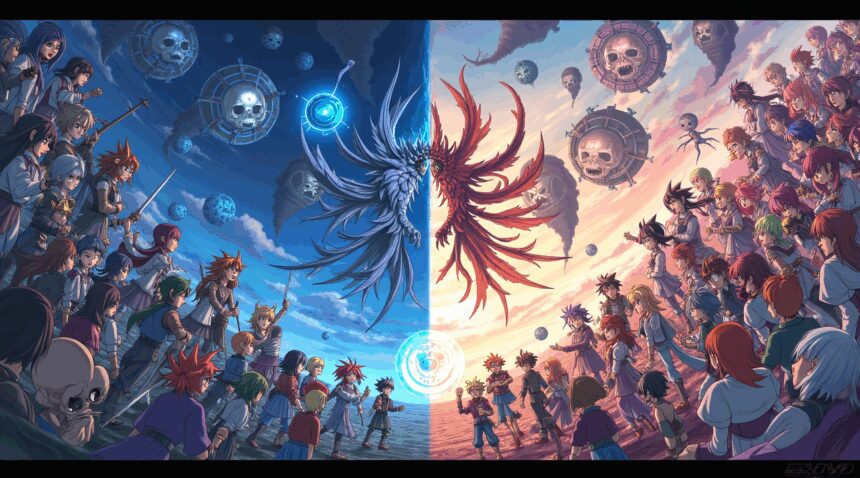Yu-Gi-Oh! has transformed dramatically since its 2002 launch. The game evolved from simple beatdown strategies with limited card pools to complex modern formats featuring multiple summoning mechanics and sophisticated archetype engines. The game’s meta progression reflects a carefully managed balance between power creep and strategic diversity. Konami’s banlist system serves as the primary tool for maintaining competitive health while allowing continuous innovation.
Key Takeaways
- Revolutionary summoning mechanics introduced between 2008–2017 (Synchro, Xyz, Pendulum, and Link) fundamentally changed deck construction and created unprecedented speed and consistency in competitive play.
- The Power Five era (2002–2004) established foundational gameplay principles through overpowered staples like Pot of Greed and Raigeki, leading to the creation of the Forbidden and Limited List system for competitive balance.
- Archetype-driven strategies emerged in the mid-2000s, shifting the meta from generic goodstuff builds to structured thematic decks with internal synergies and type-specific support cards.
- Format diversity peaked during periods like Goat Format (2003–2005), where multiple viable strategies including Chaos Control, hand control, and tempo-based approaches could coexist competitively.
- Modern engine-based deck construction combines multiple toolbox strategies with hand trap interaction, creating sophisticated builds that balance combo potential against defensive capabilities while maintaining consistency across various matchups.
Modern Metagame: Power Creep, Konami Balance, and Deck Evolution (2010–Present)
The modern era of Yu-Gi-Oh! transformed the game through revolutionary summoning mechanics that fundamentally changed how players approached deck construction. Starting with Synchro summoning in 2008, followed by Xyz in 2011, Pendulum in 2014, and Link summoning in 2017, each mechanic pushed the boundaries of what decks could achieve on both offense and defense.
I’ve witnessed how these new summoning methods created unprecedented levels of speed and consistency in competitive play. Synchro monsters allowed players to access powerful Extra Deck monsters through tuner-based combinations, while Xyz summoning enabled rank-based strategies that didn’t require specific levels. Pendulum mechanics broke conventional rules by treating monsters as both spells and creatures, creating explosive plays that could flood the field instantly. Link summoning then restructured the entire Extra Deck landscape, forcing players to reconsider board positioning and resource management.
The Power Creep Era and Competitive Balance
Modern Yu-Gi-Oh! exemplifies power creep at its most apparent, with cards becoming progressively stronger and combos reaching incredible potency levels. Archetype engines now serve as the foundation for most competitive decks, offering hyper-consistent strategies that can either establish seemingly unbreakable boards or dismantle opponent setups with surgical precision.
The characteristics that define modern meta archetypes include:
- Multi-step combo sequences that generate significant advantage from minimal starting hands
- Built-in search effects and special summoning conditions that maintain card flow
- Protection mechanisms that make established boards difficult to break
- Engine versatility that allows for both offensive pushes and defensive setups
- Recovery options that enable comebacks from disrupted game states
Konami has maintained competitive balance through strategic banlist management, regularly updating restrictions to prevent any single strategy from dominating indefinitely. Oppressive decks like Zoodiac, SPYRAL, and Sky Striker have all faced targeted limitations when their win rates became too overwhelming. These adjustments ensure that Yu-Gi-Oh! TCG changing landscapes remain fresh and encourage continuous innovation from competitive players.
The banlist system operates as both a regulatory mechanism and a creative catalyst. When powerful cards receive restrictions, players must adapt their strategies, often discovering entirely new approaches to existing archetypes. This cycle of restriction and adaptation keeps the metagame dynamic and prevents stagnation that could harm long-term player engagement.
I’ve observed how deck engines evolved from simple theme-based strategies into sophisticated toolboxes capable of accessing multiple win conditions. Modern decks often incorporate multiple engines working in harmony, creating redundancy that ensures consistent performance across various matchups. This engine-based approach allows skilled players to navigate through opponent disruption while maintaining their own game plan.
The introduction of hand traps and quick-play disruption has created an interactive layer that didn’t exist in earlier formats. Players now must balance their combo potential against defensive capabilities, leading to more nuanced deckbuilding decisions. Cards like Ash Blossom & Joyous Spring and Effect Veiler have become format staples precisely because they provide interaction during opponent turns without sacrificing tempo.
Master Duel leaks and official announcements continue shaping how players prepare for upcoming format changes. These previews allow the community to theorize about potential deck innovations and meta shifts before new releases hit the market.
Yu-Gi-Oh! has maintained its position among the top trading card games globally through this careful balance of innovation and regulation. The modern metagame rewards both technical skill and creative deckbuilding, ensuring that competitive play remains engaging for veterans while remaining accessible enough for newcomers to eventually compete at high levels. Each new mechanic and banlist update creates opportunities for previously overlooked strategies to emerge as viable contenders, keeping the competitive scene vibrant and unpredictable.
The Rise of Archetypes and Structured Deck Strategies (Mid-2000s–2010)
The Yu-Gi-Oh! competitive scene underwent a fundamental transformation during the mid-2000s as Konami introduced archetype-driven strategies that moved away from generic goodstuff builds. This shift created a more structured approach where support cards specifically enhanced monster types such as Warriors, Spellcasters, and Fiends, establishing the foundation for modern deck construction principles.
Legacy of Darkness and Control Evolution
Legacy of Darkness emerged as a pivotal set that introduced several game-changing cards that would define control strategies for years to come. Last Turn, Fiber Jar, and Yata-Garasu became cornerstone cards that shaped how players approached stall and control-based gameplay. These cards demonstrated how single powerful effects could dictate entire match outcomes, forcing players to adapt their strategies around potential lockouts and alternate win conditions.
Last Turn particularly exemplified the era’s focus on high-risk, high-reward gameplay mechanics. Players began incorporating this card into specialized decks that could reliably clear the field before activation, creating nearly guaranteed victory scenarios. Fiber Jar offered reset potential that allowed control decks to recover from disadvantageous board states, while Yata-Garasu enabled devastating lockdown strategies that prevented opponents from drawing cards.
Cyber Dragon’s Tempo Revolution
The debut of Cyber Dragon in 2005 marked a seismic shift in how players approached deck tempo and aggression. This card’s ability to special summon itself when opponents controlled monsters while the player had none created unprecedented opportunities for explosive turns and fusion combos. Cyber Dragon enabled aggressive gameplay patterns that contrasted sharply with the slow, methodical control strategies that had previously dominated.
Players quickly recognized Cyber Dragon’s potential as both a standalone threat and fusion material, leading to the development of dedicated Cyber decks alongside its inclusion in various toolbox strategies. The card’s impact extended beyond its own archetype, influencing how designers approached special summoning mechanics and fusion accessibility throughout the changing TCG landscape.
Toolbox strategies gained significant prominence during this period, fundamentally altering how players constructed their decks. Rather than focusing on multiple copies of the same powerful cards, players began incorporating diverse one-of monsters and spells that could be accessed through search cards like Reinforcement of the Army. This approach improved deck versatility by allowing players to respond to various situations with specific answers.
Reinforcement of the Army became essential for Warrior-based toolbox builds, enabling consistent access to situational monsters like Freed the Matchless General for light removal or Command Knight for field presence. Players developed sophisticated search chains that could adapt to different matchups, creating more dynamic gameplay experiences where knowledge of available targets became crucial for success.
The structured support concept revolutionized archetype development during this era. Instead of relying on generic powerful cards, decks began utilizing type-specific support that created synergistic interactions between related monsters. Spellcaster decks gained access to Magical Dimension and other archetype-specific tools, while Fiend strategies utilized cards like Archfiend’s Oath to maintain hand advantage.
This period established the template for modern Yu-Gi-Oh! design philosophy, where cohesive themes and internal synergies became more important than individual card power levels. Players learned to evaluate cards not just for their standalone strength but for how they complemented their chosen archetype’s overall strategy.
The era’s influence extended well beyond its timeframe, establishing deck construction principles that continue to shape competitive play today. Successful players from this period understood that consistency and synergy often trumped raw power, a lesson that remains relevant as new strategies continue evolving in digital formats.
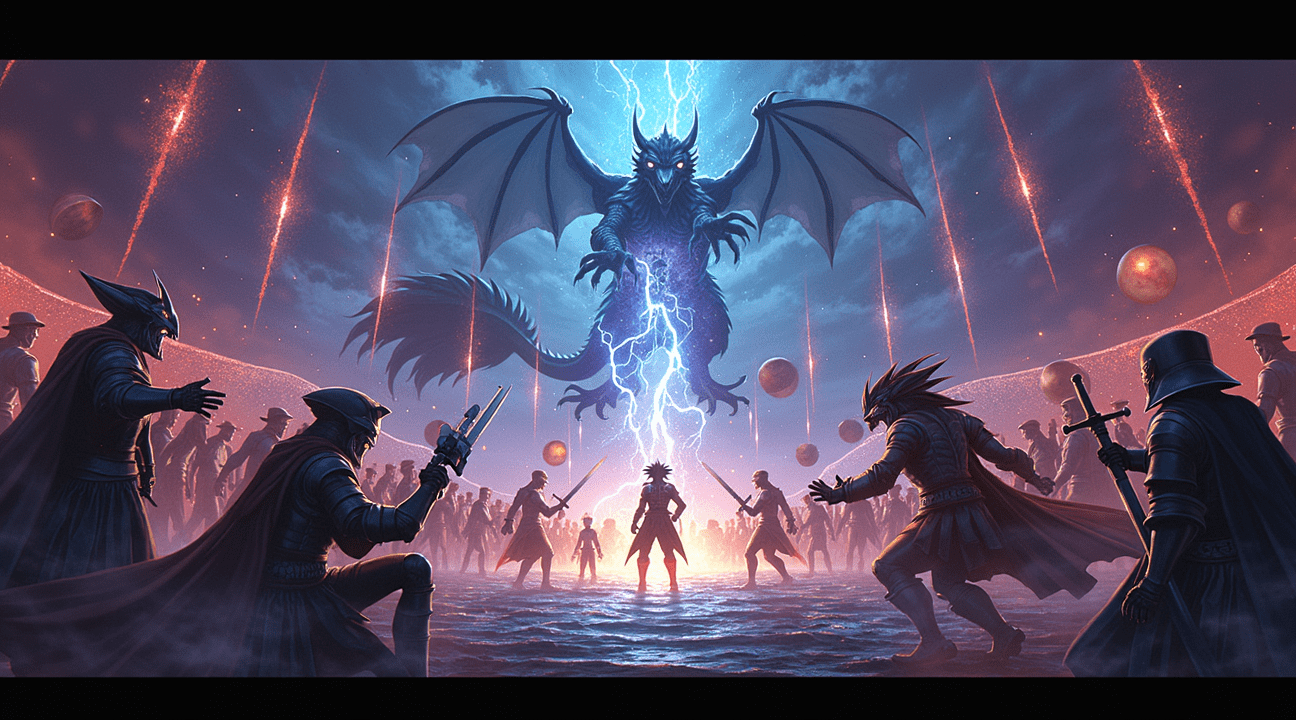
Meta Diversification: Beatdown, Chaos, Hand Control (2003–2005)
The card pool’s expansion during this period fundamentally transformed Yu-Gi-Oh! from its early experimental phase into a game with distinct competitive strategies. I’ve witnessed how players began gravitating toward specialized deck types that would define the game’s direction for years to come.
The Rise of Beatdown Strategies
Gemini Elf revolutionized competitive thinking by showcasing what efficient normal summon stats could accomplish. This 1900 ATK Level 4 monster set a new benchmark that forced players to reconsider their approach to battle damage. Beatdown decks emerged as a legitimate archetype, focusing on consistent damage output through efficiently-statted monsters rather than complex combo setups.
These strategies proved that sometimes the most straightforward approach yields the best results. Players discovered that maintaining board pressure with strong attackers could overwhelm opponents before they established their own game plans. The philosophy behind beatdown decks influenced deck construction principles that remain relevant today, particularly in understanding the balance between resource efficiency and immediate impact.
The Evolution of Control and Combo Strategies
The emergence of specialized strategies during this era created several dominant approaches that shaped competitive play.
Hand control strategies reached their most oppressive form with the infamous Yata-Lock, a devastating combination that essentially ended games once established. This lock utilized Yata-Garasu alongside powerful disruption cards like:
- Confiscation
- The Forceful Sentry
- Delinquent Duo
- Time Seal
These cards allowed players to completely shut down their opponent’s ability to play.
Chaos Control decks introduced a new level of explosive power through boss monsters that could single-handedly turn games around. Notable examples included:
- Chaos Emperor Dragon – Envoy of the End
- Black Luster Soldier – Envoy of the Beginning
These cards required careful deck construction to meet their summoning conditions, but their payoff potential made the investment worthwhile.
The Goat Format and Strategic Depth
The Goat Format represents perhaps the most celebrated period in Yu-Gi-Oh! history among veteran players. Yu-Gi-Oh! TCG landscapes during this time featured intricate gameplay patterns centered around Scapegoat and Metamorphosis. Goat Control decks exemplified tempo-based strategies, using these key cards to maintain board control while gradually building advantage.
Scapegoat tokens provided both defensive utility and Metamorphosis fodder, creating versatile play patterns that rewarded skilled pilots. The format’s complexity came from the interaction between various staple monsters and spells, creating decision trees that required deep game knowledge to navigate optimally. This period established many principles about resource management and tempo that continue influencing modern deck construction.
Emerging Archetypes: Zombies and Monarchs
Zombies and Monarchs emerged as additional competitive archetypes, each bringing unique mechanics to the table:
- Zombie decks: Leveraged graveyard interactions and recursion effects.
- Monarch strategies: Focused on tribute summoning powerful effect monsters to control the game state.
These archetypes demonstrated how thematic coherence could translate into competitive viability.
New Challenges: Adapting to the Meta
The diversification of strategies during this period created a healthy competitive environment where multiple approaches could succeed. Players had to adapt their deck construction and gameplay to account for various threats, from the explosive power of Chaos monsters to the grinding advantage of control strategies.
- Deck building required balancing aggression with flexibility.
- Sideboarding became more strategic to account for matchup variety.
- Players developed stronger meta awareness through repeated high-level competition.
These dynamics elevated the overall skill ceiling of competitive play.
Master Duel’s approach to recreating these classic formats shows how influential this period remains. The ban list implementations during 2003–2005 were crucial in maintaining competitive balance while allowing these diverse strategies to coexist.
Psychological Impact of Hand Control
Hand control’s prominence during this era highlighted the importance of information advantage and resource denial. The psychological impact of cards like The Forceful Sentry and Confiscation created additional layers of strategy beyond simple card advantage calculations. Players needed to consider not just what cards they played, but when and how their opponents might disrupt those plays.
Lasting Legacy
This period’s legacy lies in establishing the foundation for modern Yu-Gi-Oh! archetypes and competitive principles. The lessons learned from Goat Format continue influencing deck building philosophy, while the power level established by Chaos monsters set expectations for future boss monsters. Understanding these historical developments provides valuable context for appreciating how the game evolved into its current form.
Staple Cards and the First “Broken” Spells & Traps (2002–2004)
I recall those early tournament days when deck construction revolved around five incredibly powerful cards that shaped the game’s competitive landscape. The Power Five consisted of Raigeki, Pot of Greed, Graceful Charity, Change of Heart, and Monster Reborn – spells and traps that offered unmatched card advantage and game-changing momentum shifts. Players couldn’t afford to leave these cards out of their decks, as doing so would place them at an immediate disadvantage against opponents who included them.
The Dominance of Game-Breaking Strategies
Each member of the Power Five brought devastating effects that modern players might find shocking by today’s standards. Pot of Greed offered free card draw with no cost or condition, while Graceful Charity allowed players to draw three cards and discard only two, effectively providing card selection alongside advantage. Change of Heart let duelists steal opponents’ monsters for an entire turn, often leading to immediate game wins through direct attacks or tribute summons.
Monster Reborn‘s ability to revive any monster from either graveyard without restriction created explosive comeback opportunities that felt almost unfair. Raigeki destroyed all opponent monsters without targeting, clearing entire fields in a single activation. These cards didn’t just influence games – they decided them, making tournament matches feel predictable despite the supposed variety in deck building approaches that characterized the TCG’s evolution.
Konami’s Response and the Birth of Regulation
The overwhelming presence of these meta staples created a stagnant competitive environment where decklists became carbon copies of each other. Tournament organizers noticed that successful builds contained nearly identical spell and trap lineups, with only minor variations in monster choices distinguishing one deck from another. This homogenization threatened the game’s long-term health and strategic depth.
Recognizing this problem, Konami introduced the game’s first Forbidden and Limited List in May 2002, marking a pivotal moment in competitive play regulation. The list targeted 12 cards that had proven too powerful for healthy gameplay:
- Raigeki and Pot of Greed received outright bans due to their overwhelming impact
- Monster Reborn and Graceful Charity joined the forbidden category for similar reasons
- Change of Heart faced restrictions that limited its tournament presence
- Several other problematic cards received limitations to reduce their frequency in competitive play
This regulatory approach represented Konami’s commitment to maintaining deck diversity and preventing any single strategy from dominating tournaments completely. Players had to adapt their building philosophies, searching for new combinations that could compete without relying on the previously essential power cards.
The forbidden list’s introduction forced creative deck construction that hadn’t existed during the Power Five era. Duelists began exploring alternative strategies, discovering synergies between previously overlooked cards, and developing unique approaches that showcased individual playstyles rather than following predetermined templates.
I’ve observed how this period established patterns that continue influencing competitive play today. The concept of banning overpowered cards became a regular practice, with Konami updating restriction lists to address emerging problems and maintain balanced gameplay. This era taught players valuable lessons about card evaluation, strategic thinking, and adaptability that remain relevant in modern tournaments.
The transition away from the Power Five marked the beginning of more sophisticated deck building philosophies. Without guaranteed access to these overwhelming effects, successful players needed to develop deeper understanding of card interactions, resource management, and timing. This shift elevated the skill ceiling and rewarded strategic thinking over simple power plays, setting the foundation for the complex meta games that would follow in subsequent years.
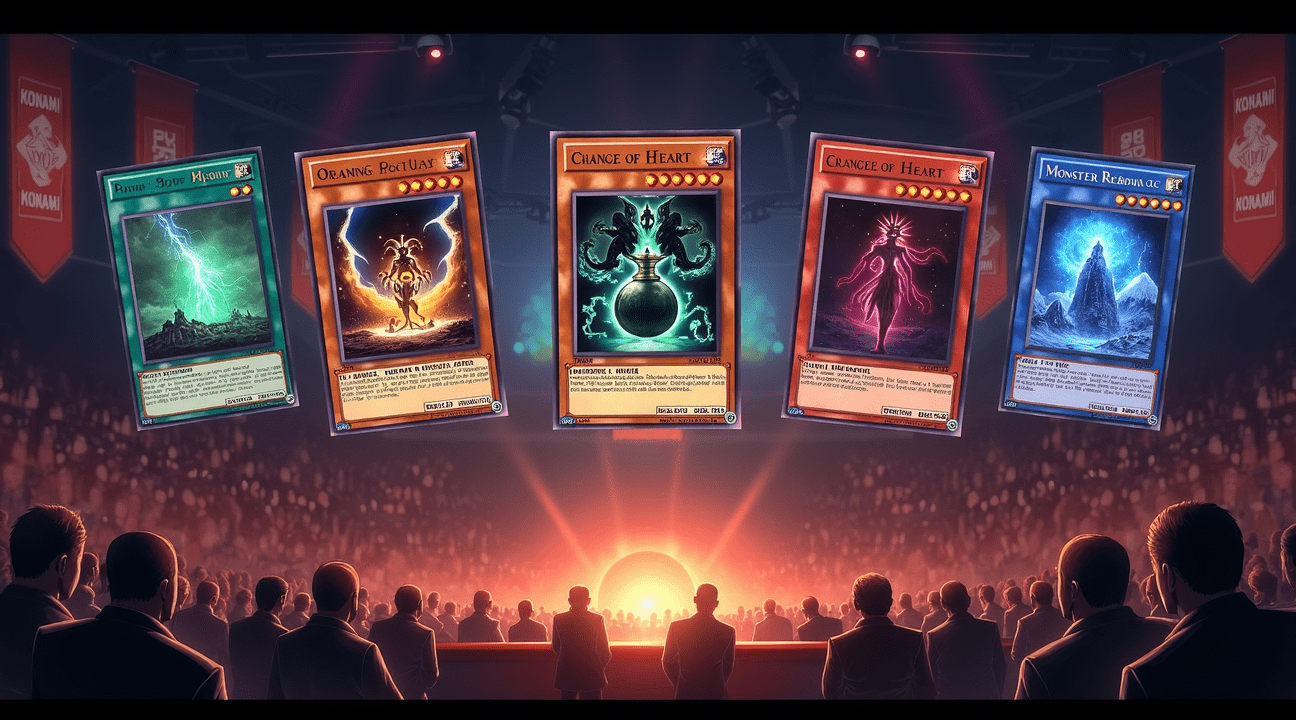
Early Years and Foundational Decks (2002–2003)
I witnessed the birth of competitive Yu-Gi-Oh! when it officially launched in March 2002 with the Legend of Blue-Eyes White Dragon set alongside the iconic Yugi and Kaiba starter decks. This initial release established the foundation for what would become decades of strategic evolution, though the starting card pool contained roughly 200 cards with only a handful of effect and fusion monsters available to players.
Beatdown Strategies Define the Early Meta
The limited card variety during this period forced players to develop straightforwardly aggressive strategies known as Beatdown decks. Players relied heavily on high-attack monsters to overwhelm opponents through sheer statistical advantage, with Summoned Skull emerging as a tempo leader due to its impressive 2500 attack points. These early deck builds prioritized raw offensive power over complex combos, creating matches that emphasized monster combat and basic spell support.
Subsequent set releases transformed the competitive landscape significantly. Metal Raiders, Magic/Spell Ruler, and Pharaoh’s Servant introduced game-changing staples that would define Yu-Gi-Oh! strategy for years to come. Cards like Graceful Charity provided unprecedented card advantage, while Torrential Tribute offered powerful board control options. Harpie’s Feather Duster became an instant staple for its ability to clear opponent’s spell and trap zones completely.
These foundational cards accelerated meta evolution beyond simple Beatdown strategies, introducing players to concepts like card advantage, tempo control, and strategic resource management. I observed how these releases established gameplay patterns that would influence deck construction philosophies throughout the game’s history. The introduction of powerful staple spells and traps created the first genuine decision-making complexity in deck building, as players had to balance offensive monsters with defensive options.
High-attack monsters remained central to early strategies, but the expanded card pool allowed for more sophisticated approaches. Players began incorporating protective spells and disruptive traps to support their primary attackers, creating the template for modern Yu-Gi-Oh! deck construction. This evolution marked Yu-Gi-Oh! TCG changing landscapes from simple monster battles to strategic dueling that required careful planning and resource allocation.
The foundational period established core principles that continue influencing competitive play today, proving that these early innovations created lasting impact on the game’s strategic depth.
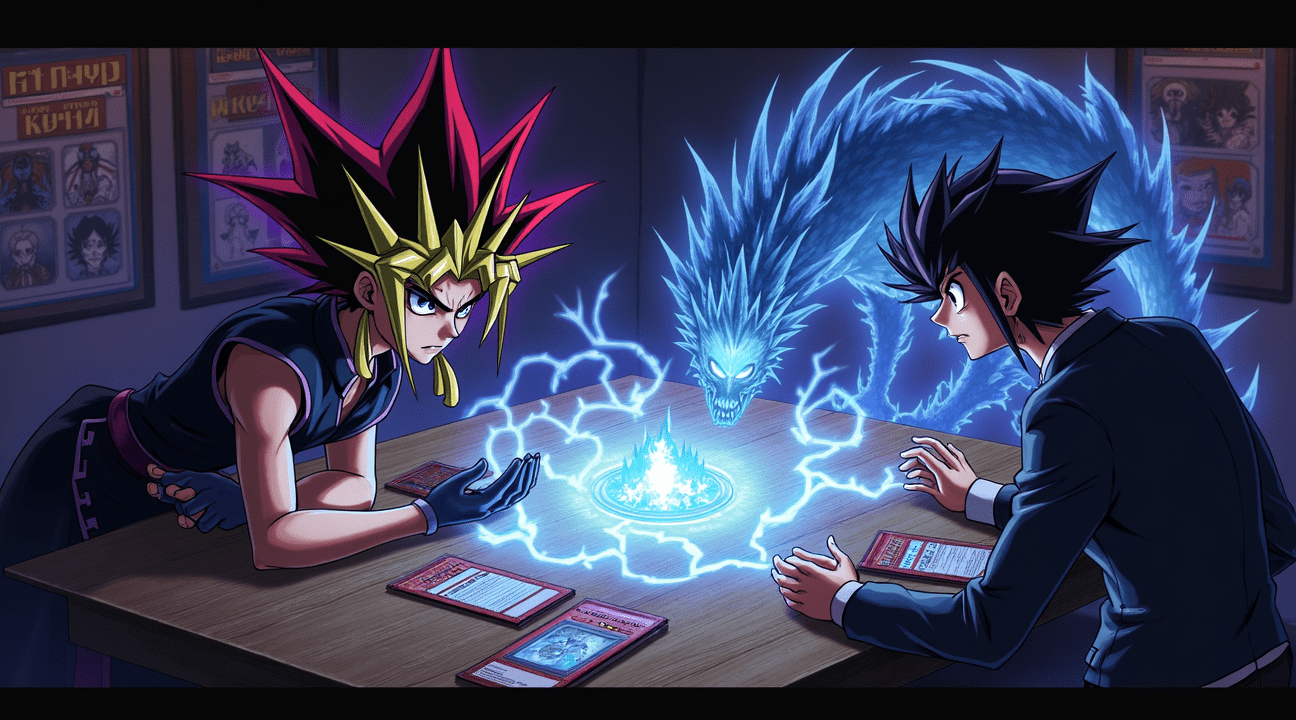
The Banlist Era: Format Control and Strategic Evolution (2002–2006)
The introduction of the Forbidden and Limited List in May 2002 fundamentally changed how Yu-Gi-Oh! operated as a competitive game. Konami’s initial response to overwhelming strategies like the notorious Yata-Lock demonstrated their commitment to maintaining a healthy competitive environment. I’ve observed how this system transformed from a reactive tool into a sophisticated method of format management.
Strategic Implementation and Meta Management
The banlist system addressed several critical gameplay issues that threatened competitive integrity:
- Hand control strategies that prevented opponents from playing the game
- Infinite loops that created unbreakable game states
- Cards with effects too powerful for the current card pool
- Strategies that eliminated strategic diversity in tournament play
Format-defining restrictions like the banning of Yata-Garasu became cornerstones of competitive balance. This particular decision prevented the oppressive lock strategy that could end games after a single successful attack. The system’s effectiveness became evident as tournament formats began showcasing greater deck diversity.
Regular banlist updates established a predictable rhythm for competitive players. These quarterly or bi-annual adjustments allowed Konami to respond to emerging problematic strategies while giving players time to adapt their decks. The Limited List served as a middle ground, restricting powerful cards to one copy per deck rather than eliminating them entirely.
I witnessed how this era established the foundation for modern Yu-Gi-Oh! balance philosophy. The system’s evolution from reactive bans to proactive format shaping created a template that continues today. Players learned to anticipate banlist changes, developing multiple deck strategies to remain competitive across format shifts.
The success of format control during this period proved that strategic restriction could enhance rather than limit gameplay creativity. Removing oppressive elements forced players to explore alternative strategies and card interactions. This approach maintained the game’s excitement while ensuring that no single strategy could dominate competitive play indefinitely.
Banlist enforcement also established clear boundaries for card design in future sets. Developers could create powerful effects knowing that the restriction system provided safeguards against unintended consequences. This balance between innovation and control became essential for the game’s long-term health and competitive viability.
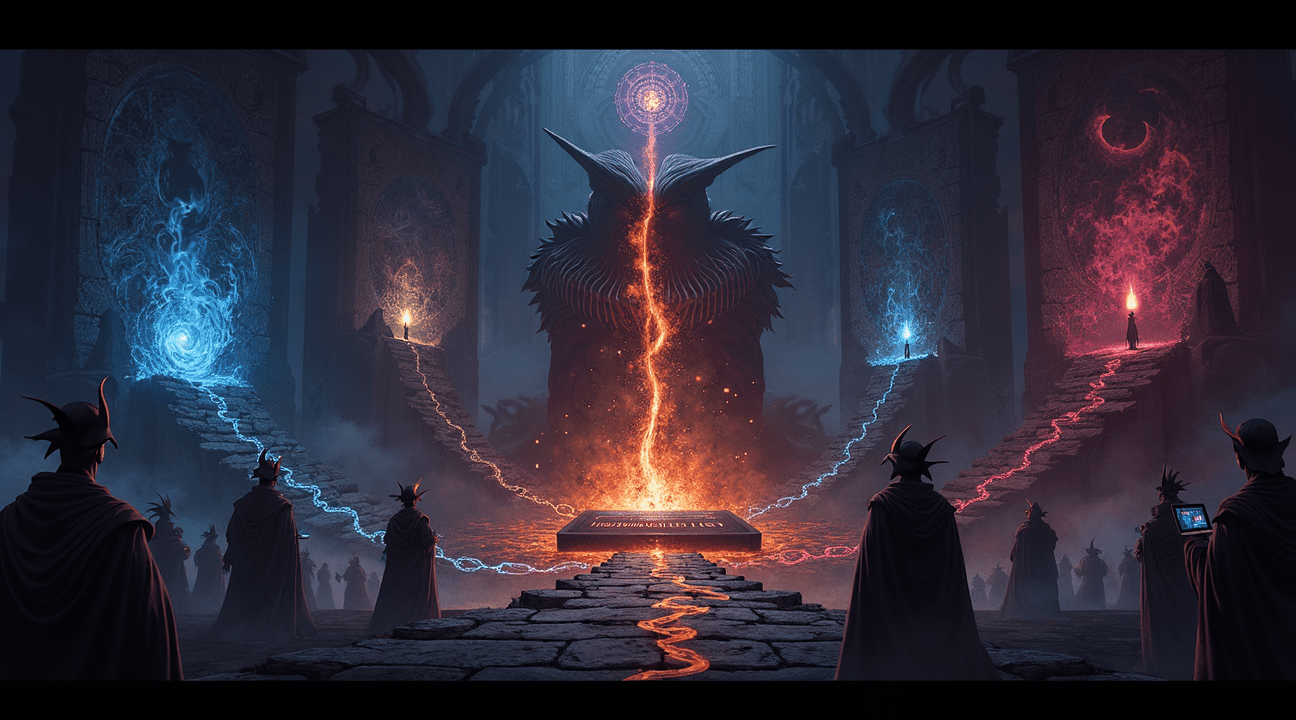
Sources:
Konami

